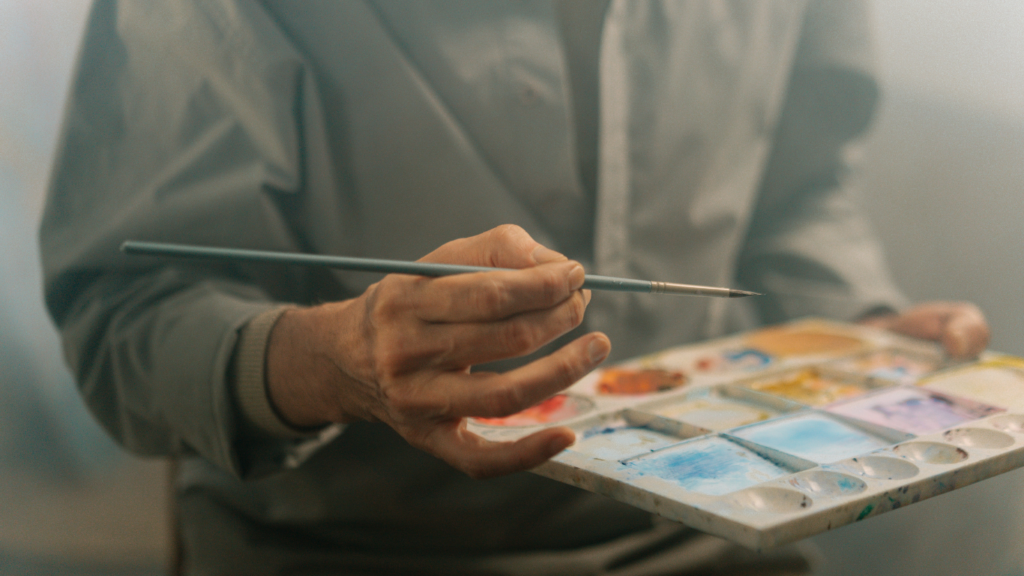As an artist, capturing realistic skin tones in your paintings can elevate the overall quality and authenticity of your artwork. In my experience, mastering advanced techniques for painting skin tones is essential for creating lifelike portraits that resonate with viewers. Through careful observation of light, shadow, and undertones, I’ve discovered methods that can help artists achieve a new level of realism in their work.
In this article, I’ll share insights and tips on advanced techniques for painting realistic skin tones that I’ve honed over years of practice. From understanding color theory to blending techniques, I’ll delve into the nuances that can make a significant difference in the portrayal of skin in your art. By incorporating these techniques into your practice, you can enhance the depth and vibrancy of your paintings, bringing your subjects to life on canvas.
Understanding Skin Tones in Painting
Understanding skin tones is essential for creating realistic and lifelike portraits in paintings. As an artist, I focus on mastering color theory, blending techniques, and observing light, shadow, and undertones to achieve a new level of realism in my artwork. By incorporating these advanced techniques, I enhance the depth and vibrancy of skin tones in my paintings, making them more authentic and visually appealing.
Materials and Tools for Painting Realistic Skin Tones
When painting realistic skin tones, selecting the right paints is essential to achieving a natural look. I prefer using artist-grade oil paints as they offer a wide range of colors and excellent blending properties. These paints provide rich pigments that can be easily layered to create depth and nuances in skin tones.
- Selection of Paint
For realistic skin tones, I recommend choosing a basic palette that includes essential colors such as titanium white, burnt umber, raw sienna, cadmium red, yellow ochre, and ultramarine blue. These colors can be mixed to create a variety of skin tones ranging from fair to dark. It’s crucial to experiment with mixing these colors to find the perfect shade for your subject’s skin. - Brushes and Other Tools
When painting skin tones, having the right brushes and tools can make a significant difference in achieving realistic results. I find that round sable or synthetic brushes in various sizes work well for blending and detailing skin. Additionally, having a palette knife can be useful for mixing colors and creating texture. A smooth surface palette and a palette that allows you to blend colors seamlessly are also essential tools for painting lifelike skin tones.
Advanced Techniques for Mixing Skin Tones
When it comes to creating realistic skin tones in paintings, mastering color theory and mixing basics is essential. Understanding how colors interact and blend is key to achieving lifelike results. Here are some tips to enhance your skin tone mixing skills:
Color Theory and Mixing Basics
In painting realistic skin tones, having a solid grasp of color theory is fundamental. It’s crucial to understand the color wheel, complementary colors, and how to create various shades and tones by mixing primary colors. By mastering color theory, artists can create harmonious and believable skin tones in their portraits. Experimenting with different color combinations and understanding the principles of hue, saturation, and value will greatly improve the quality of your work.
Applying Realistic Skin Tones in Portraits
Exploring how to apply realistic skin tones in portraits involves a meticulous approach to color mixing and observation. To portray lifelike skin tones convincingly, I rely on a deep understanding of color theory and the interplay of light and shadow on the skin.
When painting portraits, I begin by analyzing the subject’s skin undertones — the subtle hues beneath the surface that influence the overall color. Recognizing these undertones allows me to mix base colors that closely match the subject’s complexion.
Next, I experiment with mixing primary colors to create a range of shades and tones. Working with complementary colors helps me achieve balance and harmony in the skin tones, adding depth and vibrancy to the portrait. By blending colors strategically, I can replicate the natural variations present in human skin.
Observing how light interacts with the skin is crucial for achieving realism. I pay close attention to highlights, mid-tones, and shadows, adjusting my color choices accordingly to capture the nuances of the skin’s texture and structure. This attention to detail enhances the overall authenticity of the portrait.
Mastering the art of applying realistic skin tones in portraits requires a combination of color theory knowledge, color mixing skills, and keen observation. By incorporating these advanced techniques into my painting process, I can create portraits that exude lifelike qualities and emotional depth.





